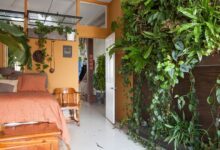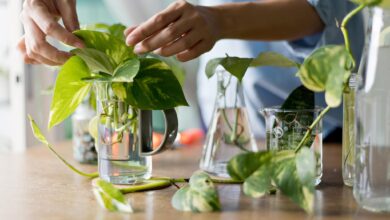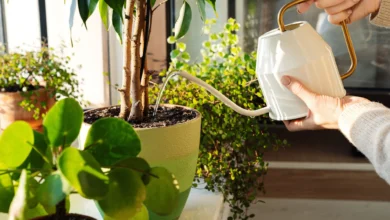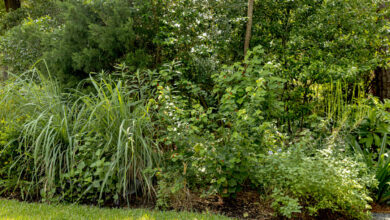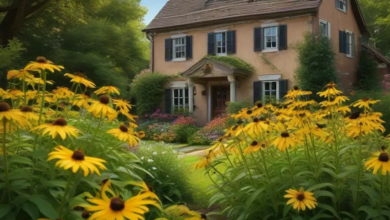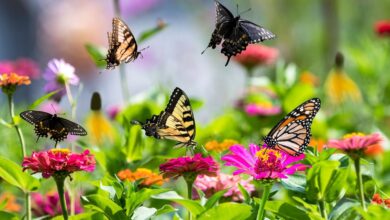Best Low-Light Houseplants That Actually Survive in Dark Rooms
Discover the best low-light houseplants perfect for dark rooms. Learn which indoor plants thrive without sunlight and how to care for them effortless.
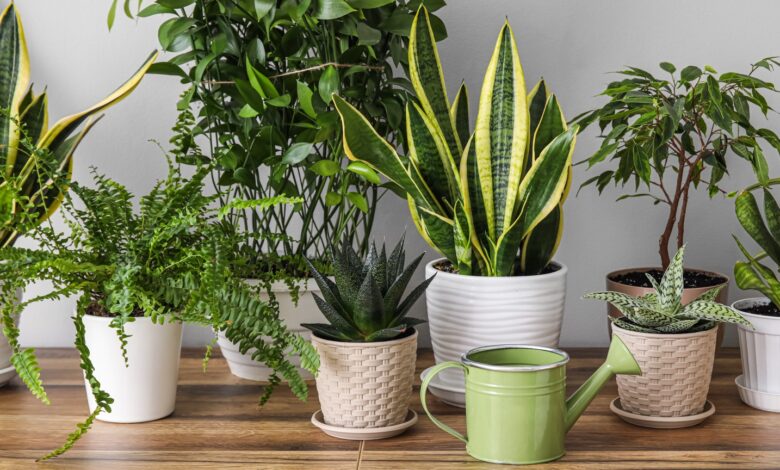
Many plant enthusiasts believe that low-light houseplants are a myth, assuming that every indoor plant requires abundant sunlight to flourish. However, this misconception couldn’t be further from the truth. The reality is that numerous houseplants for dark rooms can not only survive but thrive in spaces where natural light is scarce or virtually non-existent. Whether you’re dealing with a basement apartment, an office without windows, or that perpetually shadowy corner of your bedroom, there’s a solution: shade-tolerant houseplants that have evolved to adapt to minimal lighting conditions.
The secret behind these resilient plants lies in their biological adaptation to rainforest and forest floor environments, where sunlight is filtered through dense canopies. In their native habitats, these botanical wonders developed large leaves and specialized photosynthetic mechanisms that allow them to extract maximum energy from even dim light. How plants survive without direct sunlight opens up a world of possibilities for transforming your home’s darkest spaces into lush, vibrant gardens. Not only do indoor plants that don’t need sun beautify your surroundings, but many also function as natural air purifiers, removing toxins and improving air quality. For busy individuals, beginners, and experienced plant parents alike, low-maintenance plants for dark corners represent the perfect solution to greening your interior spaces without demanding constant attention. This comprehensive guide will explore the best dark room plants available, revealing which species genuinely thrive in low-light conditions and providing essential care instructions to ensure your green companions flourish year-round.
Light Requirements for Indoor Plants
Before diving into specific shade-loving houseplants, it’s essential to understand how light affects plant growth and development. Plants require light to produce energy through photosynthesis, a fundamental biological process that fuels their growth, reproduction, and overall health. However, not all plants need identical amounts of light to thrive.
Low-light conditions typically refer to spaces receiving less than 75 foot-candles of natural light or areas where you can comfortably read a book without straining your eyes. These spaces might include north-facing windows, areas far from windows, or rooms illuminated primarily by artificial lighting. Many plants that grow in shade have evolved to be highly efficient at converting minimal light into energy, making them exceptional choices for interior spaces where bright conditions simply aren’t available.
The key distinction among houseplants lies in the difference between survival and thriving. While some plants can merely survive in low light, the best shade-tolerant indoor plants actually prefer these conditions and may suffer or develop leggy growth patterns if exposed to too much direct sunlight. This guide focuses exclusively on plants that thrive without sunlight or with minimal light exposure, ensuring you select specimens truly suited to your home’s lighting reality.
ZZ Plant: The Nearly Indestructible Choice
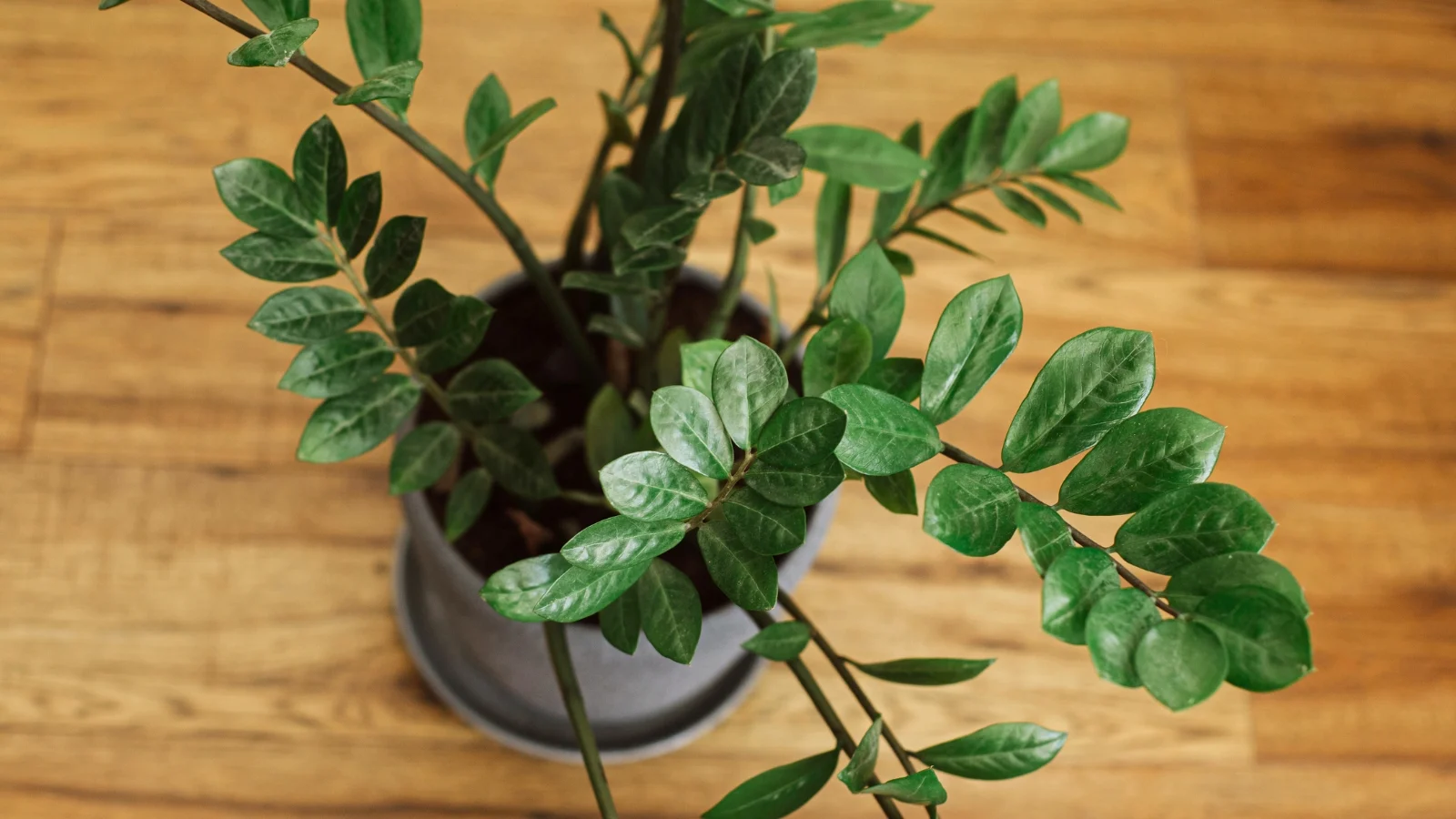
The ZZ plant (Zamioculcas zamiifolia) stands as one of the most impressive low-light indoor plants ever domesticated, earning its reputation as an almost invincible houseplant for challenging environments. Originally native to East African rainforests, this shade-tolerant plant features glossy, dark green leaflets arranged along thick, waxy stems that create a sophisticated, architectural appearance. The ZZ plant’s remarkable adaptability to dark room plant scenarios stems from its ability to store water in its potato-like rhizomes, allowing it to survive extended periods with minimal watering.
What makes the ZZ plant perfect for low light is its unique photosynthetic efficiency and minimal maintenance requirements. This plant can tolerate extended periods without water and adapts equally well to artificial lighting or natural low-light conditions. Its air-purifying capabilities add another layer of benefit, as the ZZ plant removes harmful toxins like xylene and toluene from your home’s air. For those new to houseplants for dark rooms, the ZZ plant represents an ideal starting point, as it practically thrives on neglect. Simply water when the soil feels completely dry, ensure proper drainage, and provide occasional dusting of its waxy leaves. The ZZ plant grows slowly, eventually reaching impressive heights, making it perfect for corners, entryways, or beside office desks where low-light conditions predominate.
Snake Plant: Mother-in-Law’s Tongue Alternative
The snake plant, scientifically known as Sansevieria trifasciata and colloquially called mother-in-law’s tongue, represents another champion among plants that survive in dark rooms. This striking low-maintenance plant for dim spaces features dramatically upright, sword-like leaves with distinctive patterns and variegations that add visual interest to any interior. Originally from West African arid climates, the snake plant has adapted mechanisms allowing it to thrive in shade conditions and resist both neglectful watering and poor light.
The snake plant’s tolerance for low light makes it exceptional for offices, bathrooms, and basement spaces where natural sunlight rarely penetrates. This succulent houseplant stores water within its thick, fleshy leaves, requiring watering only when the soil becomes completely dry. Overwatering represents the primary threat to snake plant health, frequently causing root rot in excessively moist conditions. For dark room plant scenarios, this minimal watering requirement becomes advantageous, as lower light means slower evaporation and reduced water needs. Beyond survival capabilities, the snake plant actively improves indoor air quality through its remarkable ability to convert CO2 into oxygen during nighttime hours, a unique characteristic among most houseplants. Choose varieties like the golden-edged or laurentii variant for additional visual appeal in your low-light interior spaces.
Pothos: The Trailing Vine That Adapts Everywhere
Pothos, also known as devil’s ivy or Epipremnum aureum, reigns as one of the most adaptable indoor plants that thrives in low light conditions imaginable. This vigorous trailing vine thrives in virtually every household situation, from dimly lit bathrooms to basements with minimal natural light. The pothos plant develops attractive heart-shaped leaves along climbing or trailing stems, creating cascading displays perfect for shelves, hanging baskets, or trellises in your dark room plant collection.
The remarkable adaptability of pothos plants in low light stems from their rainforest origins, where they naturally climb trees beneath dense forest canopies. This evolutionary background means pothos practically expects limited light conditions and performs best in indirect, moderate, or low-light scenarios. The best low-light houseplants in the pothos category include varieties like ‘Golden Pothos,’ ‘Marble Queen,’ and ‘Neon Pothos,’ each offering distinct leaf colorations and patterns. Caring for pothos in shade-filled spaces requires minimal effort: water when the soil surfaces feel dry, provide a well-draining potting mix, and maintain temperatures between 65-85°F. Pothos can even survive in artificial lighting environments, making it perfect for offices or interior rooms without windows. Regular pruning encourages bushier growth and prevents leggy development, ensuring your trailing low-light plant maintains an attractive, full appearance.
Peace Lily: The Flowering Low-Light Wonder
The peace lily (Spathiphyllum wallisii) stands virtually alone as one of the few flowering houseplants for dark rooms, offering both lush foliage and elegant white blooms even in challenging low-light conditions. This tropical beauty originates from Central American rainforests, where it naturally thrives on shaded forest floors beneath towering canopies. The peace lily’s impressive ability to survive and bloom in dark room environments has made it a beloved choice for offices, bedrooms, and bathrooms where natural light limitation presents ongoing challenges.
Beyond its striking appearance, the peace lily functions as a natural air purifier, actively removing harmful substances like ammonia, formaldehyde, and acetone from indoor air. This makes it one of the most beneficial plants that grow without sunlight for improving overall indoor air quality. The peace lily’s preference for medium to low light actually works in your favor, as excessive direct sunlight can damage its delicate foliage. Water requirements remain straightforward: maintain consistently moist soil without creating waterlogged conditions, and provide humidity through occasional misting. One remarkable feature of peace lilies in low-light spaces involves their drooping leaf response to dehydration—the plant essentially tells you when it’s thirsty by dramatically wilting. Upon watering, the peace lily bounces back to life within hours, displaying genuine personality and responsiveness. The distinctive white spathes (modified leaves) that give the plant its common name appear regularly even in moderate to low-light conditions, providing reliable floral interest throughout the year.
English Ivy: The Classic Cascading Shade Lover
English Ivy (Hedera helix) represents a timeless choice for indoor plants suitable for dark rooms, bringing traditional elegance and proven adaptability to your low-light houseplant collection. This trailing vine features delicate, intricately shaped leaves in various patterns and colors, with cultivars offering green, variegated, or even speckled foliage variations. As one of the most shade-tolerant houseplants available, English Ivy has decorated interior spaces for generations, earning its reputation as an ideal solution for challenging light conditions.
The shade preference of English Ivy makes it particularly valuable in contemporary homes featuring north-facing windows or basement spaces. This low-light climbing plant happily trails from hanging containers, climbs decorative trellises, or cascades from elevated shelves, creating living walls of textured greenery. Interestingly, English Ivy demonstrates remarkable air-purifying abilities, consistently ranking among NASA-approved plants that remove indoor toxins, particularly filtering airborne particles and absorbing formaldehyde. Care requirements remain minimal: provide well-draining soil, water when surfaces feel dry, and avoid direct sunlight, which can scorch variegated varieties. The only important consideration involves consistent moisture—while ivy tolerates low light perfectly, it prefers soil that never completely dries out. For those maintaining plant collections in shady rooms, English Ivy provides reliable, attractive greenery requiring minimal intervention while actively improving air quality and adding sophisticated cascading texture to your indoor environment.
Chinese Evergreen: The Colorful Low-Light Specialist
Chinese Evergreen (Aglaonema species) offers brilliant foliage patterns and color variations unmatched by many houseplants for low-light environments, making it an excellent choice when you want both survival capabilities and visual interest in your dark room gardens. This tropical plant features striking leaf patterns combining deep greens with silver, red, pink, or cream variegations, depending on specific cultivars selected. Despite their stunning appearance, Chinese evergreens represent remarkably low-maintenance plants for dark spaces, requiring minimal attention while maintaining vibrant, healthy foliage year-round.
The drought tolerance of Chinese evergreen plants, combined with their exceptional low-light adaptability, makes them ideal for forgetful waterers or those new to houseplant parenting. This tropical shade plant actually prefers lower light conditions to direct sunlight, which can fade its distinctive leaf colors and cause stress. One critical consideration involves color retention: older green-dominant hybrids tolerate very low-light conditions beautifully, while newer colorful varieties require moderate indirect light to maintain their brilliant variegations. Chinese evergreens in dark spaces thrive with watering every 1-2 weeks or when the enil surfaces feel dry, adapted growth that prevents root rot and disease issues. These shade-loving houseplants produce small white flowers followed by attractive red berries in ideal conditions, though foliage alone justifies their selection. For creating colorful focal points in low-light interior spaces, the Chinese Evergreen delivers remarkable results with minimal care demands, making it an exceptional choice for brightening visually dim home areas.
Cast Iron Plant: The Ultimate Survivor
The cast iron plant (Aspidistra elatior) earns its descriptive common name through seemingly superhuman durability and tolerance for neglect, making it perhaps the ultimate plant for dark rooms. This Victorian-era favorite experienced renewed popularity as modern living spaces increasingly feature poorly lit interiors where traditionally demanding houseplants fail. The cast iron plant’s large, deep green, lance-shaped leaves create an impressive architectural structure in even the darkest corners, providing reliable greenery where other specimens would decline.
What makes the cast iron plant exceptional for low-light conditions is its extraordinary adaptability to minimal light, variable temperatures, inconsistent watering, and dry indoor air common in modern homes. Unlike many tropical houseplants for shade, the cast iron plant originated in East Asian environments and doesn’t demand humidity or warmth, making it perfectly suited to air-conditioned or heated interiors. This incredibly hardy dark room plant tolerates temperatures ranging from 50-85°F without complaint and can survive weeks between waterings without visible decline. For those maintaining low-light plant collections, the cast iron plant represents the forgiving option for beginners or busy individuals with limited plant-care capacity. Variegated cultivars like ‘Okame’ add visual interest with cream or white-striped foliage, though these benefit from slightly warmer conditions than their green counterparts. The minimal fertilizer needs and negligible pest susceptibility of cast iron plants in dark spaces make them genuinely maintenance-free, requiring only basic well-draining soil and watering when the soil becomes completely dry.
Spider Plant The Resilient Cascader
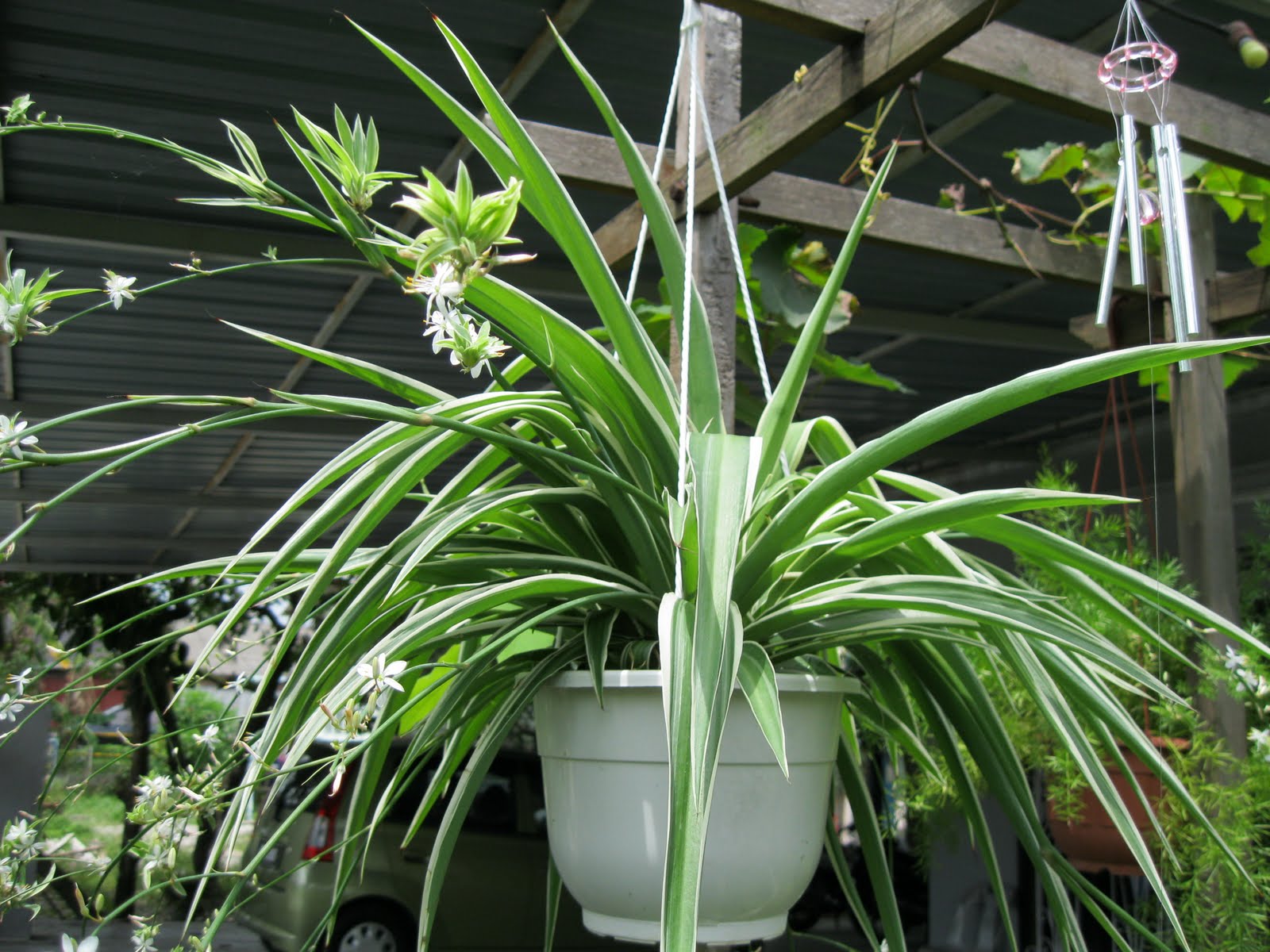
The spider plant (Chlorophytum comosum) has earned its status as one of the most beloved houseplants that grow in low light, combining exceptional durability with attractive fountaining foliage and prolific offspring production. This adaptable indoor plant features slender, arching leaves in green or variegated patterns, with mature specimens producing adorable baby plantlets called “spiderettes” that dangle from trailing runners. The spider plant’s remarkable popularity among both novice and experienced plant parents reflects its forgiving nature and reliable performance in dark room environments.
The exceptional low-light tolerance of spider plants stems from their rainforest understory origins, where they naturally evolved to thrive beneath dense vegetation layers that filtered sunlight. While spider plants prefer bright indirect light, they genuinely tolerate significant light reduction without complaint, making them excellent choices for offices, bedrooms, and interior rooms lacking windows. This highly adaptable low-light houseplant actually produces offspring (spiderettes) more readily when experiencing slightly reduced light conditions, creating propagation opportunities. Watering requirements for spider plants in dim spaces involve maintaining moist (not soggy) soil and occasional misting to replicate rainforest humidity. Like many shade-tolerant houseplants, spider plants excel at removing airborne toxins, particularly filtering formaldehyde and xylene. The trailing runners adorned with baby plantlets make spider plants ideal for hanging containers or elevated shelves where cascading foliage creates visual interest. For plant collections in dark rooms, spider plants provide reliable, attractive, nearly indestructible greenery requiring minimal intervention while delivering consistent aesthetic and air-purifying benefits.
Philodendron: The Adaptable Climbing Vine
Philodendrons comprise an extensive genus of tropical climbing vines and split-leaf species that thrive in low-light indoor environments, earning their reputation as some of the most forgiving houseplants for beginners. Whether you select the classic heartleaf philodendron or dramatic varieties like the Monstera philodendron, these vining plants adapt beautifully to dark room conditions while maintaining attractive foliage throughout their lifespan. The philodendron’s combination of adaptability, attractive appearance, and minimal care requirements makes it an essential addition to any low-light plant collection.
The remarkable adaptability of philodendrons to low light reflects their evolutionary background as rainforest understory vines that naturally climb trees seeking filtered sunlight from above. These shade-tolerant climbing plants develop smaller leaf spacing and slightly slower growth in dark room environments, but maintain overall health and vibrancy indefinitely. Philodendrons in low-light spaces require watering only when the soil surfaces feel completely dry, preventing the root rot issues that plague overwatered specimens. What makes philodendrons exceptional among low-maintenance dark room houseplants is their capacity for aerial root development that allows absorption of ambient moisture and nutrients. Provide moss poles, trellises, or allow trailing growth patterns depending on your space and aesthetic preferences. The air-purifying capabilities of philodendrons in low-light conditions complement their attractive foliage and adaptability, actively removing formaldehyde and other common household toxins. For those seeking climbing vines for dark rooms or trailing specimens for hanging containers, philodendrons deliver reliable, attractive results without demanding special conditions or constant attention.
Maidenhair Fern: The Delicate But Resilient Choice
Maidenhair ferns (Adiantum species) represent fascinating low-light houseplants that appear delicate yet demonstrate surprising resilience in proper conditions. These feathery-frond ferns feature distinctive, delicate black or reddish stems supporting intricate, lacy foliage that creates an almost ethereal appearance in dark room settings. While maidenhair ferns require slightly more attention than some other shade-loving houseplants, their unmatched beauty and genuine preference for low-light conditions justify the modest additional care effort required.
The exceptional shade tolerance of maidenhair ferns makes them ideal choices for bathrooms, bedrooms, and interior spaces where natural light barely penetrates. These delicate low-light plants actually prefer moderate to low light, thriving in conditions where brighter-light-demanding species would flourish. This means maidenhair ferns perform beautifully near north-facing windows, in interior bathrooms, or alongside other plants that grow without sun. The primary care consideration for maidenhair ferns in dark rooms involves maintaining consistent moisture without creating waterlogged soil conditions. These moisture-loving houseplants benefit from daily misting or placement near humidity sources like bathroom windows. The lacy, intricate foliage serves as a natural air-purifying medium, helping filter household toxins while adding delicate texture to your low-light indoor gardens. For those willing to provide modest regular attention, maidenhair ferns deliver rewards unmatched among ferns for dark rooms, creating romantic, forest-like atmospheres in even the most challenging home lighting scenarios.
More Read: Best Low-Maintenance Houseplants for Busy People
Conclusion
Successfully incorporating low-light houseplants into your interior spaces transforms dark rooms from liabilities into opportunities for creating lush, vibrant gardens that thrive without demanding abundant natural sunlight. The extensive variety of shade-tolerant houseplants available ensures that virtually every home—regardless of lighting conditions—can feature beautiful, healthy indoor plants that survive without direct sun. From the nearly indestructible ZZ plant and cast iron plant to the elegant peace lily and delicate maidenhair fern, each dark room plant offers unique aesthetic contributions while simultaneously improving indoor air quality through toxin removal and oxygen production.
Whether you’re a seasoned gardener seeking low-maintenance options for dim spaces or a complete beginner exploring your first houseplant collection, the best plants for low-light conditions deliver reliable performance, minimal care requirements, and genuine personality that enriches your living environment. By your space’s specific light conditions and matching them with appropriately adapted shade-loving houseplants, you’ll establish thriving indoor gardens that prove dark rooms needn’t remain lifeless, empty corners. Start with easy-to-care specimens like spider plants or pothos, gradually expanding your collection as confidence builds, and soon you’ll discover that the most challenging spaces in your home become the most rewarding gardens.
